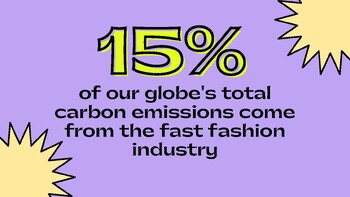Sustainable Fashion - Why Upcycling?
Lily Switka
1 Follower
Grade Levels
4th - 12th
Subjects
Resource Type
Standards
NGSSHS-ESS3-3
NGSSMS-ESS3-5
NGSSMS-ESS3-3
Formats Included
- PDF
Pages
28 pages
Lily Switka
1 Follower
Description
This is the second module of the Sustainable Fashion package, focused on upcycling. In this lesson, students will learn about the fast fashion industry's impact on the environment. They will discover how upcycling can be an alternative solution.
Students will conduct a science experiment that analyzes the decomposition and wearability of several fabrics, to simulate how garments behave over time in a landfill.
Total Pages
28 pages
Answer Key
N/A
Teaching Duration
N/A
Report this resource to TPT
Reported resources will be reviewed by our team. Report this resource to let us know if this resource violates TPT’s content guidelines.
Standards
to see state-specific standards (only available in the US).
NGSSHS-ESS3-3
Create a computational simulation to illustrate the relationships among the management of natural resources, the sustainability of human populations, and biodiversity. Examples of factors that affect the management of natural resources include costs of resource extraction and waste management, per-capita consumption, and the development of new technologies. Examples of factors that affect human sustainability include agricultural efficiency, levels of conservation, and urban planning. Assessment for computational simulations is limited to using provided multi-parameter programs or constructing simplified spreadsheet calculations.
NGSSMS-ESS3-5
Ask questions to clarify evidence of the factors that have caused the rise in global temperatures over the past century. Examples of factors include human activities (such as fossil fuel combustion, cement production, and agricultural activity) and natural processes (such as changes in incoming solar radiation or volcanic activity). Examples of evidence can include tables, graphs, and maps of global and regional temperatures, atmospheric levels of gases such as carbon dioxide and methane, and the rates of human activities. Emphasis is on the major role that human activities play in causing the rise in global temperatures.
NGSSMS-ESS3-3
Apply scientific principles to design a method for monitoring and minimizing a human impact on the environment. Examples of the design process include examining human environmental impacts, assessing the kinds of solutions that are feasible, and designing and evaluating solutions that could reduce that impact. Examples of human impacts can include water usage (such as the withdrawal of water from streams and aquifers or the construction of dams and levees), land usage (such as urban development, agriculture, or the removal of wetlands), and pollution (such as of the air, water, or land).





